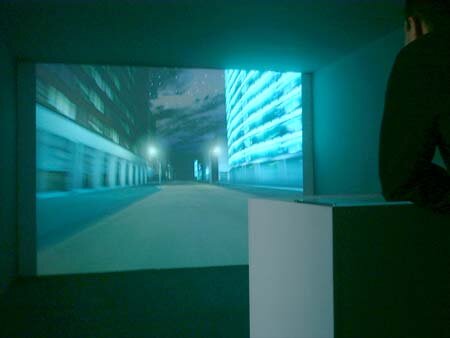Connivence | Biennale de Lyon
June 23 - Sept. 2001
Curated by Laurence Dreyfus
Potsdamer platz (Unreal Edit)
Installation, modification of computer game
Potsdamer Platz, Modification of computer game 2001
In the interactive installation Potsdamer Platz (UnrealEdit) Tobias Bernstrup presents a virtual representation of Berlin. By using the graphic engine of the video game Unreal Tournament he has created his own playable version of urban landscape.
Generic Textures
Berlin’s Potsdamer Platz today is the perfect place to be replaced by a computer game level. In this space no one is for real, even the Berliners are tourists in their own city. But of course as frequent tourists we all get used to our un-reality.
As Rem Koolhaas described in his manifesto 1995 about the Generic City, the general city, the city without qualities, the city without identity, these spaces are very similar to the city environments found in today’s 3D-computer games. I.e. in the intro sequence of the game Sin (Activision 1998) we fly in over a typical city, with its typical skyline. Everything is reduced; simple textures describing the typical image of the city as a city. Just like Potsdamer Platz is more of an image of the new Berlin than a reality, or more of a game environment than a real space. Practically it is rather easy to convert the space into a game. The buildings facades consist of a few all very similar and significant sets of textures, which is good for increasing our CPU performance when navigating through the space in any reality.
Our new City Dresscode
The game is the perfect fetish reality. The Dresscode for the buildings in our new city are; Industrial Landscape for the techno clubs and Shoot em up games, glass and metal facades for our pseudo public owned by big corporations spaces like Postdamer Platz. So let us consider game architecture as our new public spaces accessible through singleplayer- or online multiplayer games.
The output of a deathmatch might be fatal. But why not try a simulation?
Tobias Bernstrup 2001




